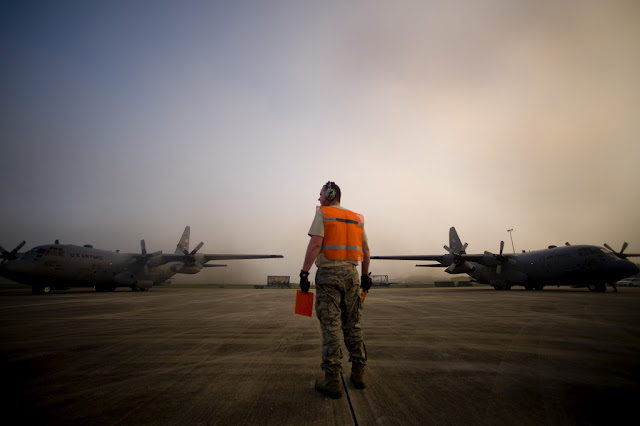As the crippled Deepwater Horizon oil rig continues to spew an estimated
210,000 gallons of crude oil a day into the Gulf of Mexico, the Department of Defense has been asked to bring its considerable resources to bear on what has become an increasingly more common mission – disaster relief.
British Petroleum has requested specialized military imaging software and
remote operating systems that are unavailable on the commercial market in order to help track and contain the spill.
In addition, the Coast Guard has been coordinating efforts to burn off oil collecting on the ocean’s surface and thousands of National Guard units have been ordered to the Gulf coast to help erect barriers in a bid to halt what President Obama called “a massive and potentially unprecedented environmental disaster,” as the oil slick creeps towards the coast.
As shown by these calls and the ongoing earthquake relief effort in Haiti, the military’s ability to respond to large-scale, catastrophic natural (and manmade) disasters is currently considered unmatched. The first Air National Guard aircraft was on the ground in Haiti 23 hours after the earthquake first struck, and DOD’s Transportation Command was able to begin supporting USAID relief efforts almost immediately. The Department of Defense also spearheaded American relief efforts after the 2004 tsunami and played a critical role in providing aid and security in New Orleans after Hurricane Katrina.
The Pentagon’s four-year strategic doctrine, the Quadrennial Defense Review (QDR), released earlier this year, predicts that such humanitarian missions will become a more common occurrence for America’s military, as the world grapples with the destabilizing effects of climate change, population growth, and competition over finite energy resources. Some experts see this expansion of the military’s portfolio as an essential part of a “hearts and minds” strategy, while others are critical of the military’s ability to navigate the difficulties of long-term reconstruction.
The QDR also highlights DOD’s efforts to reduce the need for oil – and thus deepwater oil rigs – in the first place.
The DOD as a whole is the largest consumer of energy in the United States, consuming a million gallons of petroleum every three days. In accordance with the QDR, Pentagon leaders have set an ambitious goal of procuring at least 25 percent of the military’s non-tactical energy requirement from renewable sources by 2025. The Air Force – by far the Pentagon’s largest consumer of petroleum – would like to acquire half of its domestic jet fuel requirement from alternative fuels by 2016 and successfully flight-tested a F/A-18 “Green Hornet” on Earth Day, using a blend of camelina oil and jet fuel.
At a speech at Andrews Air Force Base in March, President Obama lauded these efforts as key steps to moving beyond a petroleum-dependant economy. However, at the same event, he announced the expansion of off-shore drilling, in what some saw as a political bone thrown to conservatives. Since the Deepwater Horizon incident, the administration announced a temporary moratorium until the causes of the rig explosion and wellhead collapse have been investigated.
Cleo Paskal, associate fellow for the Energy, Environment, and Development Programme at Chatham House, warns that without paying adequate attention to the potential effects of a changing environment on energy infrastructure projects of the future – like the kind of off-shore drilling proposed for the Gulf and Eastern seaboard – such disasters may occur more frequently.
In an interview with ECSP last fall, Paskal pointed out that off-shore oil and gas platforms in the Gulf of Mexico were a prime example of how a changing environment – such as increased storm frequency and strength – can impact existing infrastructure. “Katrina and Rita destroyed over 400 platforms, as well as refining capacity onshore. That creates a global spike in energy prices apart from having to rebuild the infrastructure.”
The Department of Defense has demonstrated – in policy, with the QDR, and in action – that it can marshal its considerable resources in the service of renewable energy and disaster relief. But given the scope of today’s climate and energy challenges, it will take much more to solve these problems.
Photo Credit: “Deepwater Horizon,” courtesy of flickr user U.S. Coast Guard. U.S. Air Force Tech. Sgt. Joe Torba of the 910th Aircraft Maintenance Squadron, which specializes in aerial spray, prepares to dispatch aircraft to a Gulf staging area.

 A Publication of the Stimson Center.
A Publication of the Stimson Center.



